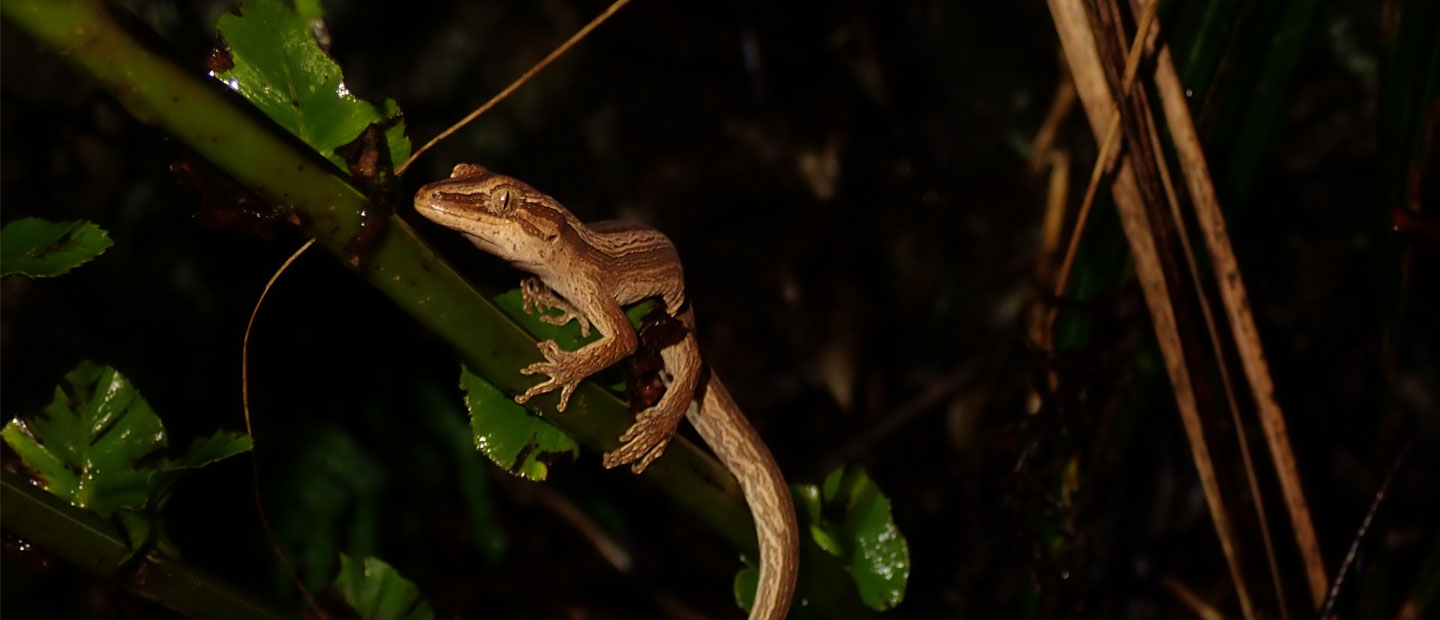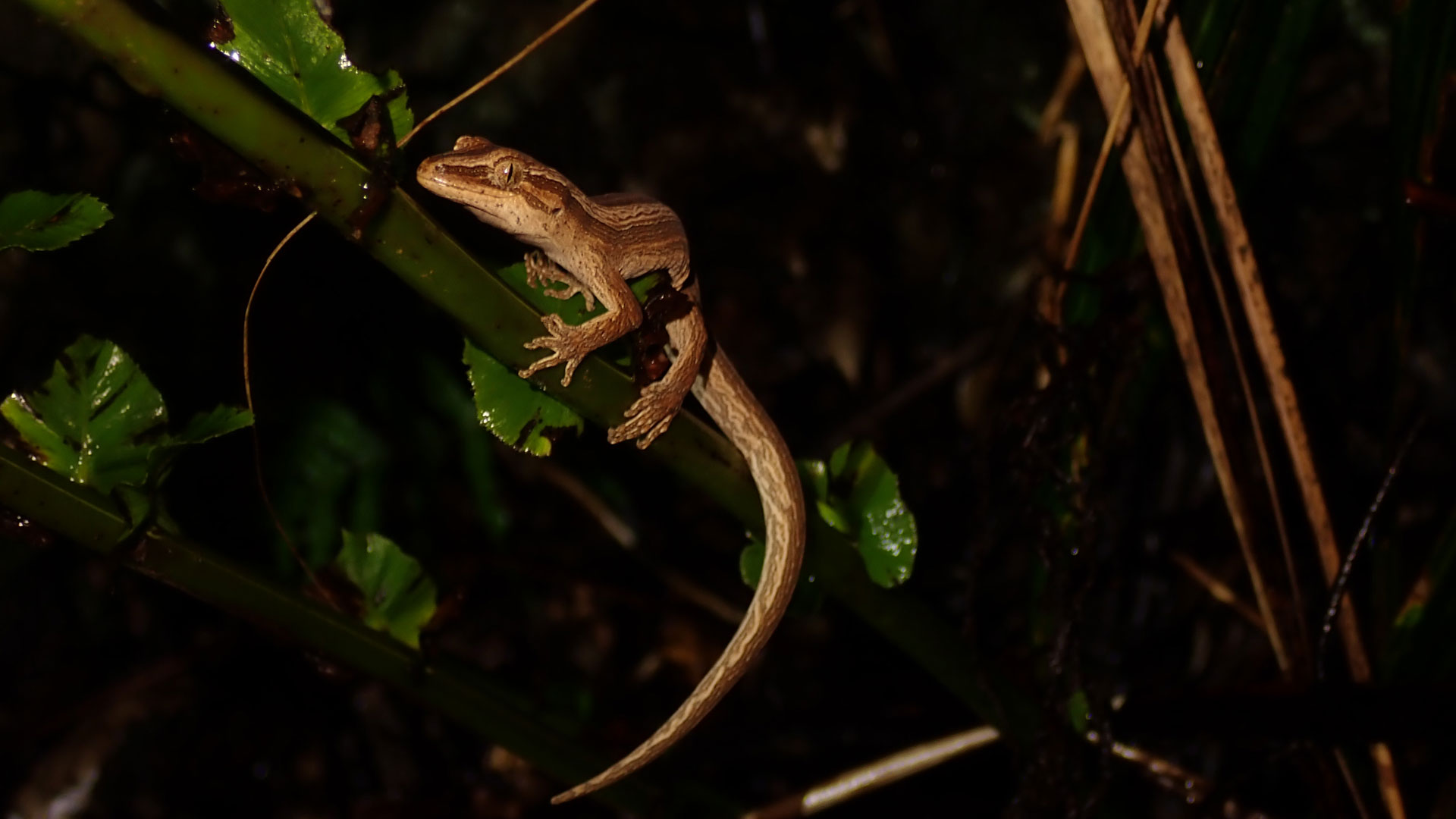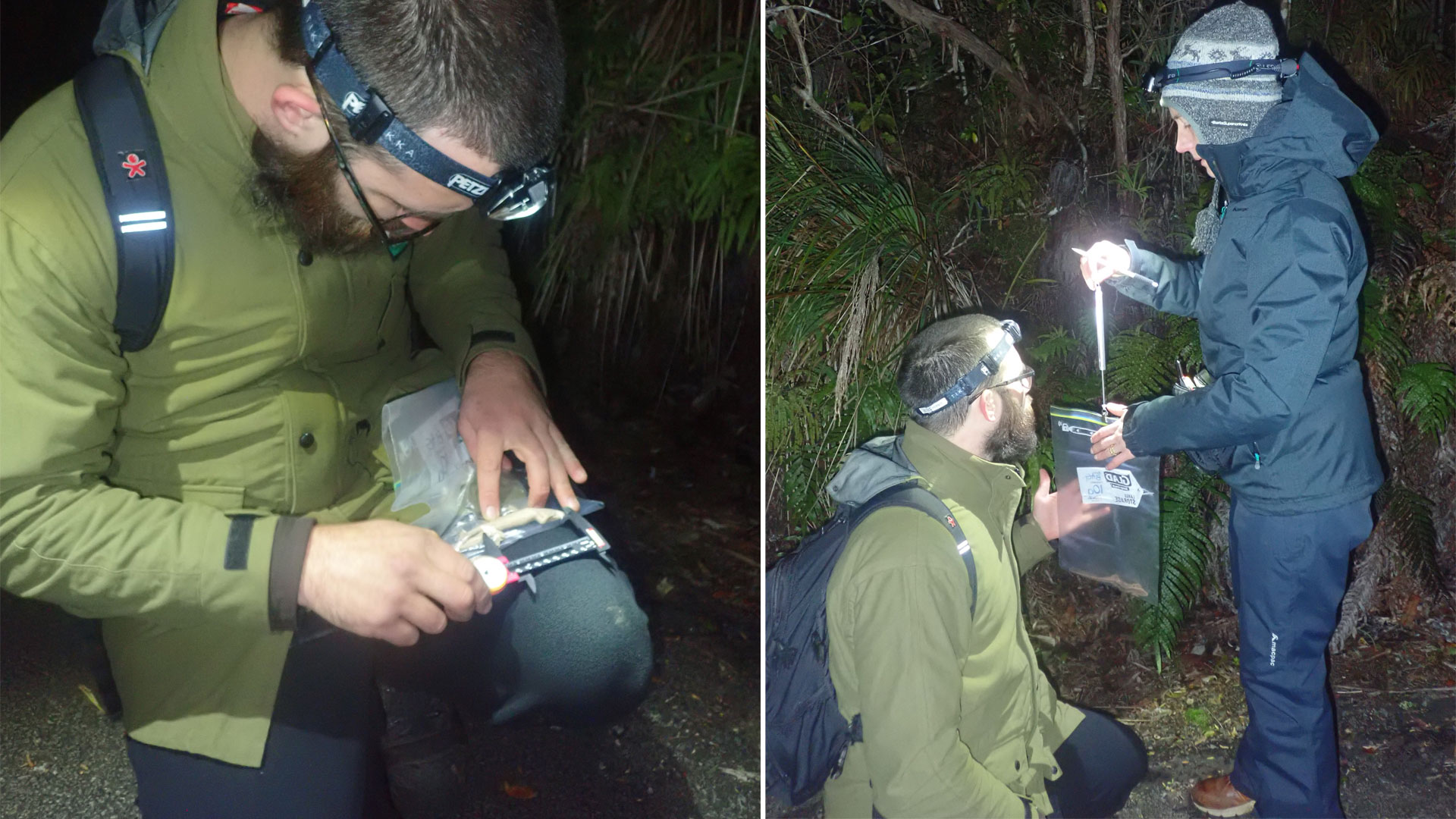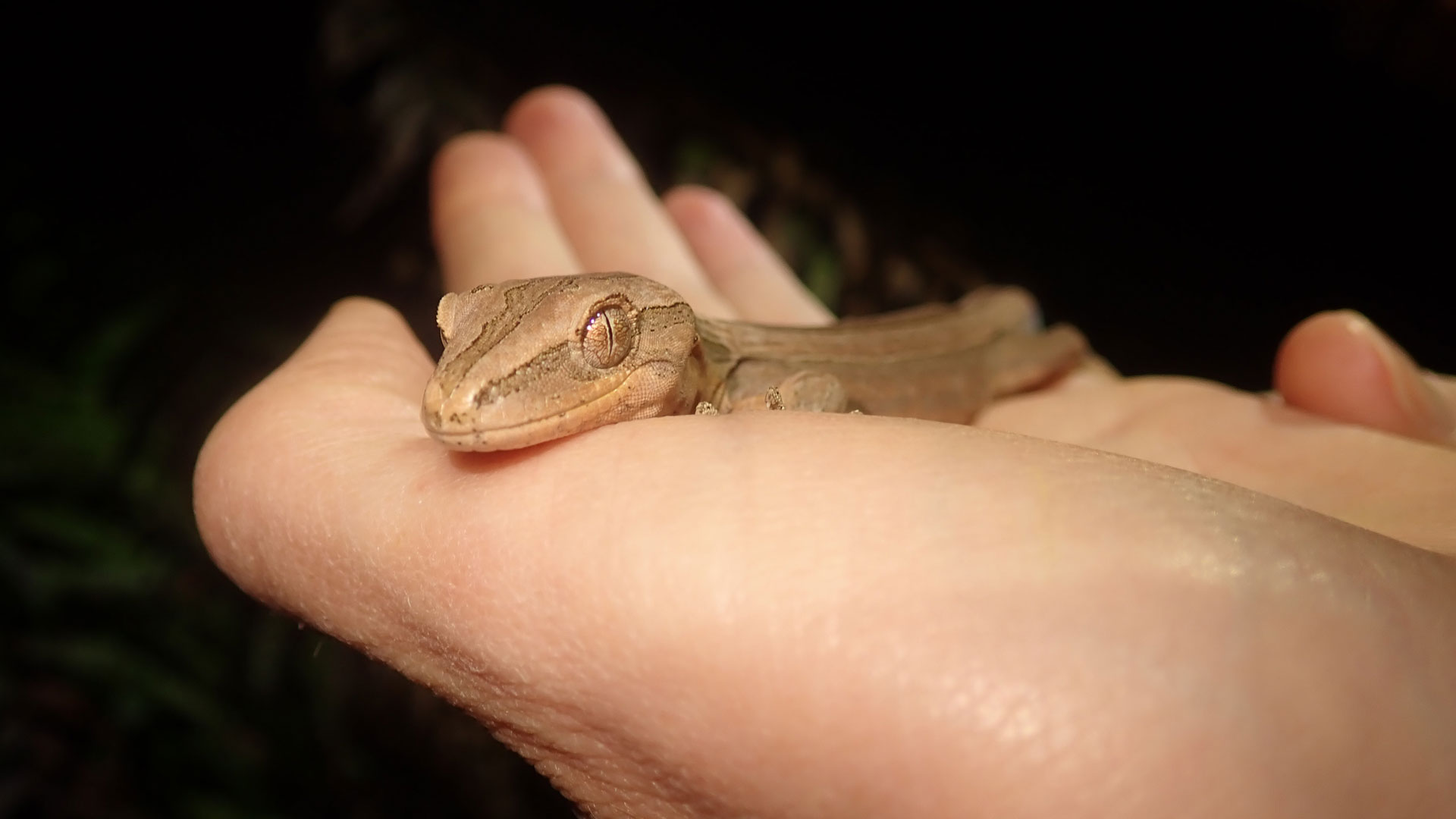Of course, our work with the northern striped gecko wouldn’t be possible without our conservation partnership with the Mahakirau Forest Estate Society Inc. (MFESI), which manages a large tract of forest comprised of multiple private properties in the Coromandel Ranges. The age of the forest, its pivotal location and the superb care the residents take of it through intensive pest control and active conservation stewardship, make it the ideal home for many of Aotearoa’s fascinating endemic species. On this trip Seth also encountered Hochstetter’s frogs and Helm’s butterfly. There aren’t many places in New Zealand where this would be possible, which is what makes it such a special place.
Auckland Zoo staff carry out gecko surveys four times per year. The first trip of the year also involves surveying for the tiny and evolutionarily distinct Archey’s Frog with every subsequent trip solely focused on the northern striped gecko. For each trip, our team coordinates with Sara Smerdon, Mahakirau’s ‘Community Advocate’, who Seth describes as amazingly hard-working. Sara lives on the forest estate and does most of the important pest control out there. As with most ectotherms throughout New Zealand, the native fauna found here are threatened by the ‘usual suspects’ - introduced pests like rats, mice, stoats, cats, possums and hedgehogs. Sara works alongside our staff during the monitoring, as well as kindly organising dinners and accommodation within the estate.
How do we look for these elusive native geckos? The team uses a torch to ‘spotlight’ for them, shining a light into bushes, ferns and on the ground to spot them. Once found, each individual is carefully measured and photographed (they each have unique markings). Everything is recorded about where and when the gecko was found including the vegetation and height above the ground, temperature, humidity, and other weather conditions. We are then able to check these photos against our database and see if we have encountered the gecko previously as they are all individually identifiable by their patterning. Up until 2014 the DOC database included only 28 sightings of this species from anywhere in the Coromandel. Today, with consistent and repeated monitoring, the Mahakirau database now includes 115 individuals, more than 80% of the known population!






